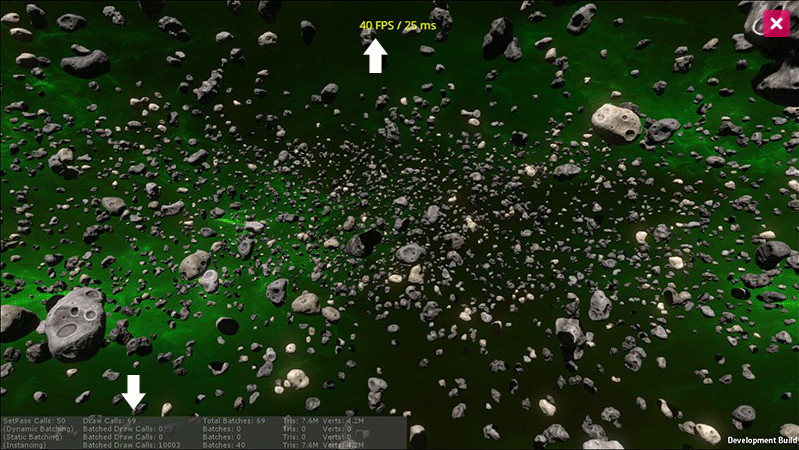Unity Technologies releases Unity 5.4 in public beta
Unity Technologies has released a beta of Unity 5.4, the latest update to the game engine and development environment, improving visual quality and introducing GPU instancing and better multithreaded rendering.
The beta was released at GDC 2016, alongside Unity 5.3.4, a new stable release.
Unity Technologies also released a new real-time tech demo, Adam, created using a beta build of Unity 5.4.
New post-processing effects
The headline feature listed on the blog post announcing Unity 5.4 is simply “enhanced visuals”: a point rammed home by the video above, which sets the old Unity 5.0 demo side by side with the same scene rendered in 5.4.
Quite what the technical basis for those enhanced visuals consists of is less clear.
To judge by this making-of video, many of the visual changes are down to Unity’s new Cinematic Image Effects, which include screen-space raytraced reflections (SSRR), tonemapping, grading, DoF and SMAA antialiasing.
The effects, which are all still in alpha or beta themselves, aren’t actually part of the main Unity 5.4 build, although they are available as a separate free add-on in the Unity Asset Store.
Improved particle simulation and rendering
In Unity 5.4 itself, the main change seems to be improvements to the particle system, including the option to control particle width and height independently, and a new trigger module for handling particle collisions.
Particle systems can also now be lit with light probe proxy volumes (LPPVs): a new baked lighting solution for “large dynamic objects that can’t use baked lightmaps”.
Unity describes LPPBs as “generating a 3D grid of interpolated light probes inside a bounding volume and allowing you to specify the grid resolution. By doing so, you can add a spatial gradient to probe-lit objects”.
Early support for GPU instancing, better multicore support
In some ways, what’s more interesting is what is going on under the hood, including GPU instancing support.
According to Unity Technologies, Unity 5.4 can “render vast numbers of identical geometries that share the same materials with very few [GPU] draw calls”.
The test scene above, which uses three different types of rock mesh and runs on a mid-to-high-end laptop (2.8GHz Intel Core i7-4980HQ CPU, Nvida GeForce GT 750M GPU), requires just 69 draw calls.
GPU instancing is currently only available on Windows builds with DirectX 11 and Shader Model 4.0 and Mac OS X builds with OpenGL 4.1 and up, but Unity Technologies promises that “more platforms are in the pipeline”.
Multithreaded rendering support has also been improved, with the work of building graphics command lists to multiple CPU cores, removing potential bottlenecks on complex scenes.
More options for VR app developers
Finally, VR support has been extended, with SteamVR devices like the HTC Vive now supported on top of Oculus Rift, Samsung’s Gear VR and Sony’s PlayStation VR.
Users can now build to all four types of devices through a single API, with minimal “device-specific tweaking”.
Unity 5.4 also includes a Double Wide Rendering mode, enabling devs to render an image for both VR viewports in a single pass on Windows and PlayStation 4.
Pricing and availability
Unity 5.4 is available in beta for Windows 7 and above and Mac OS X 10.8+. The free Personal Edition is available to artists and studios with gross annual revenues of under $100,000 a year.
The Pro edition costs $1,500 for a perpetual licence, or $75/month for a subscription. Pro users have to pay for their iOS and Android add-ons, which also cost $1,500 each, or $75/month.
Read a full list of new features in Unity 5.4 on Unity Technologies’ blog

